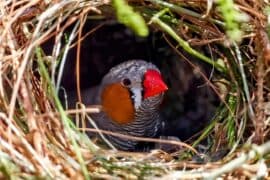Cecropia moth
(Hyalophora cecropia)

Description
Hyalophora cecropia, the cecropia moth, is North America's largest native moth. It is a member of the family Saturniidae, or giant silk moths. Females have been documented with a wingspan of five to seven inches (160 mm) or more. These moths can be found all across North America as far west as Washington and north into the majority of Canadian provinces. Cecropia moth larvae are most commonly found on maple trees, but they have also been found on cherry and birch trees among many others. The species was first described by Carl Linnaeus in his 1758 10th edition of Systema Naturae. Like other members of the giant silk moth family, the cecropia moth lacks functional mouth parts and a digestive system. Due to this, they survive approximately two weeks. To find a mate, the female cecropia moth emits pheromones which the male detects with its sensitive antennae. Male cecropia moths can detect these pheromones from up to a mile away, although a male may fly up to 7 miles while searching for a female. Mating typically begins early in the morning hours and lasts until the evening. After mating, the female will lay up to one hundred eggs. These eggs are a mottled reddish brown and are usually found on either side of a host leaf. These eggs will eventually hatch into tiny black caterpillars. There are typically five larval instars (developmental stages), each lasting approximately one week. The first instar larvae are black. Their coloration is due to small black hairs growing from tubercles (small projections) all over their body. These larvae feed upon many common trees and shrubs including maple, birch, and apple. As the caterpillars grow larger into the second larval instar, they become yellow green. During the third, fourth, and fifth instars, the cecropia moth becomes rather large and bluish green. At these final stages, the tubercles become blue, yellow or orange, depending on location on the body, while the black hairs are eventually lost. The caterpillars reach maturity in autumn and are about 4 to 4.5 inches (100 to 110 mm) long. Once the caterpillars reach maturity, they spin large brown cocoons longways on trees or wooden structures. They will then emerge as adults in the first two weeks of seasonally warm weather in early summer. Hyalophora cecropia moths are univoltine, having only one generation per year.
Taxonomic tree:







